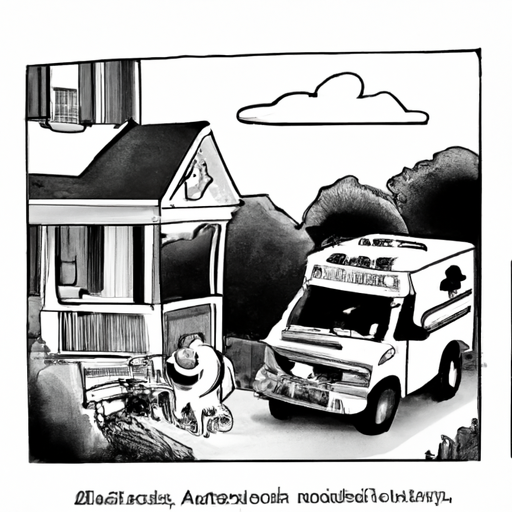In your journey as a dog parent, you might have noticed an interesting phenomenon – your dog howling at the sound of an ambulance. It’s a curious, somewhat eerie behavior that can leave you scratching your head in wonder. In this guide, we’ll delve deep into the reasons why dogs howl at ambulances, the science behind it, and what you can do if it becomes a concern for you.
Understanding Canine Communication
Canine communication is a complex system comprising barks, growls, whines and, of course, howls. Each sound carries a unique message, and it’s crucial to decipher these to understand your furry friend better.
- Barks: Typically a sign of alertness or excitement.
- Growls: Often an indication of aggression or discomfort.
- Whines: Usually a sign of neediness or distress.
- Howls: Historically used by wolves, the ancestors of dogs, to communicate over long distances.
Howling at sirens is a throwback to their wild ancestors. When a dog hears a siren, it often perceives it as a howl from another dog, triggering an instinctive response to howl back.
The Science Behind Dogs Howling at Sirens
The scientific explanation behind this behavior lies in the dog’s acute sense of hearing. Dogs hear frequencies ranging from 40 Hz to 60,000 Hz, while humans hear between 20 Hz and 20,000 Hz. This means that dogs can hear sounds that are way beyond our auditory spectrum, including the high-pitched sirens of ambulances.
| Species | Hearing Range |
|---|---|
| Humans | 20 – 20,000 Hz |
| Dogs | 40 – 60,000 Hz |
Ambulance sirens typically operate at a frequency of around 700 – 3000 Hz, well within the canine hearing range. This frequency closely resembles the natural howl of a dog, making them likely to respond.
Howling as a Pack Behavior
Dogs, being pack animals, use howling as a means of communication. When a dog hears a siren, it might perceive it as a call from a distant member of the pack. Howling in response is their way of saying “I’m here! Come find me!”
This behavior can also be seen when dogs howl in response to other high-pitched sounds, such as musical instruments or singing. It’s their instinctive way of joining in and being part of the pack.
When Howling Becomes a Problem
While occasional howling at sirens is normal and not a cause for concern, excessive howling could be a sign of stress or anxiety. If your dog howls frequently, it’s recommended to consult with a professional dog behaviorist who can provide guidance based on the specific breed, age, and health condition of your dog.
Remember to approach the situation with patience and understanding. Punishing your dog for howling can increase their stress levels and exacerbate the problem.
Dealing with Frequent Howling
If your dog’s howling becomes a frequent occurrence, here are some strategies you can consider:
- Desensitization: Gradually expose your dog to the sound of sirens at a low volume, increasing the volume slowly over time as your dog gets used to it.
- Diversion: Distract your dog with toys or treats when a siren is heard.
- Training: Teach your dog a “quiet” command to use when they start howling.
FAQ
Q: Why does my dog howl at some sirens but not others?
A: Different sirens have different frequencies. Your dog might be more sensitive to certain pitches and respond to those while ignoring others.
Q: Should I be concerned if my dog doesn’t howl at sirens?
A: Not at all. Howling is a form of communication and varies from dog to dog. If your dog doesn’t howl at sirens, it doesn’t imply any health or behavioral issues.
Q: My dog howls excessively. What should I do?
A: Excessive howling could be a sign of distress or anxiety. If your dog howls frequently, it’s advisable to consult a professional dog behaviorist.
As you navigate the journey of understanding your canine companion, remember that their behaviors are deeply rooted in their ancestry and instincts. Howling at sirens is just one of the many ways dogs express themselves. Understanding and responding to it with empathy strengthens the bond you share with your furry friend.



